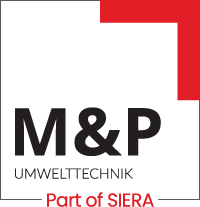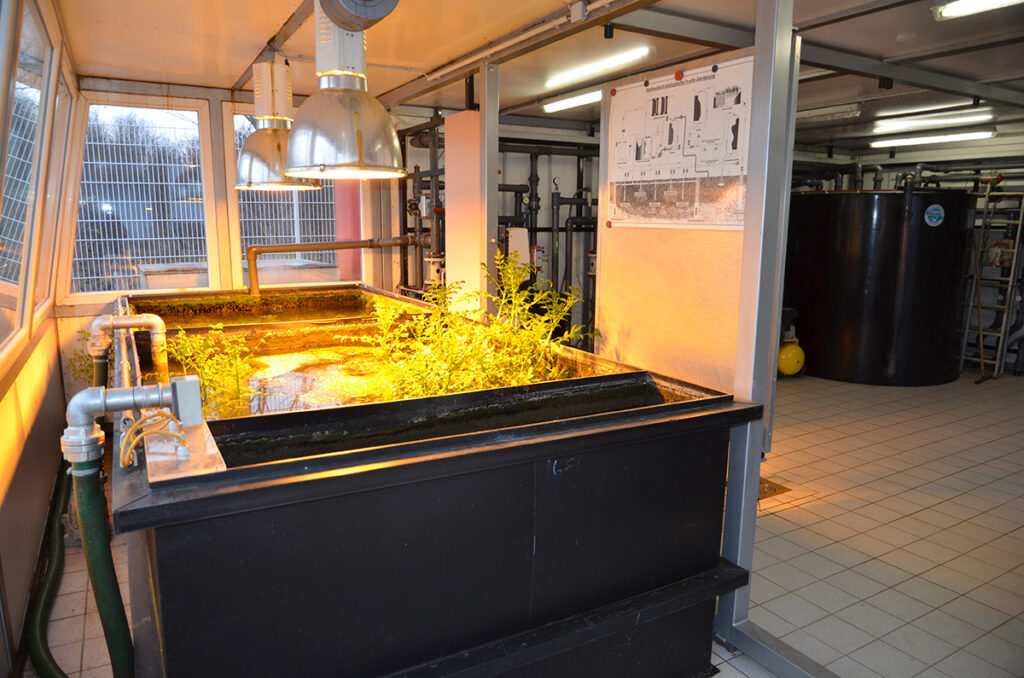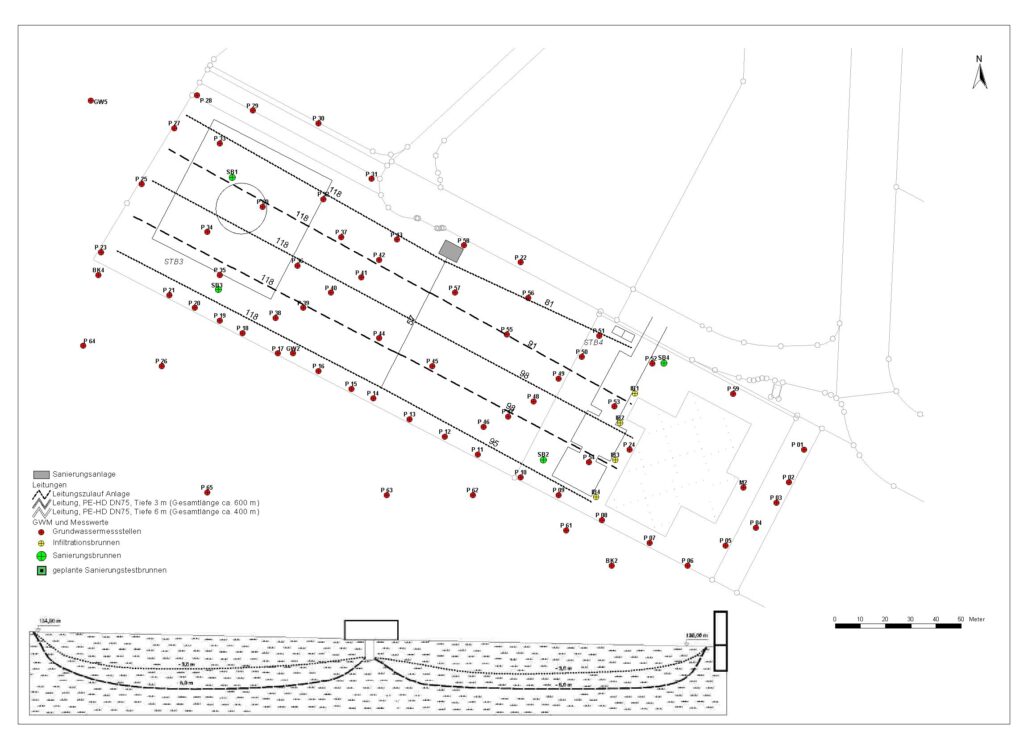On the site of a former air base in the Rhine-Main area, contaminations of the soil and of the groundwater and leachate were found in the area of a former aviation fuel tank and in the downstream of an oil separator during orienting investigations. The contaminations of the subsoil consisted of aromatic hydrocarbons (BTEX), mineral oil hydrocarbons (MKW), polycyclic aromatic hydrocarbons (PAH) and volatile halogenated hydrocarbons (LHKW).
MuP Umwelttechnik Heidelberg (until 2019 still IBL Umwelt- und Biotechnik) then carried out a detailed investigation on the 24,500 m² site. A subsoil profile was created with around 80 percussion core soundings and groundwater measuring points.
On the surface there is silt, which is partly overlain by fillings. The silt is followed by a layer of sand and gravel of varying thickness, which in turn is underlain by a tertiary clay layer with a channel structure. The groundwater or stratum water circulates in this channel structure and transports the pollutants.
With this information, a remediation plant was planned, built and operated by MuP Umwelttechnik for soil and groundwater purification. Due to the local conditions, it was decided to use a hydraulic-biological in-situ remediation system with horizontal infiltration and extraction pipes as well as vertical wells. Four remediation wells and seven parallel suction lines were connected to the plant and a total of about 1.5 km of pipelines as well as 2.3 km of supply and communication lines were laid underground on the entire site. The refurbishment took a total of 17 years. From 2004 until the remediation target values were reached in 2021.
MuP Umwelttechnik was actively involved in the remediation from the beginning until the dismantling of the plant in February 2023 and has developed a groundwater monitoring concept for the aftercare in order to be able to conclusively assess the remediation success.





